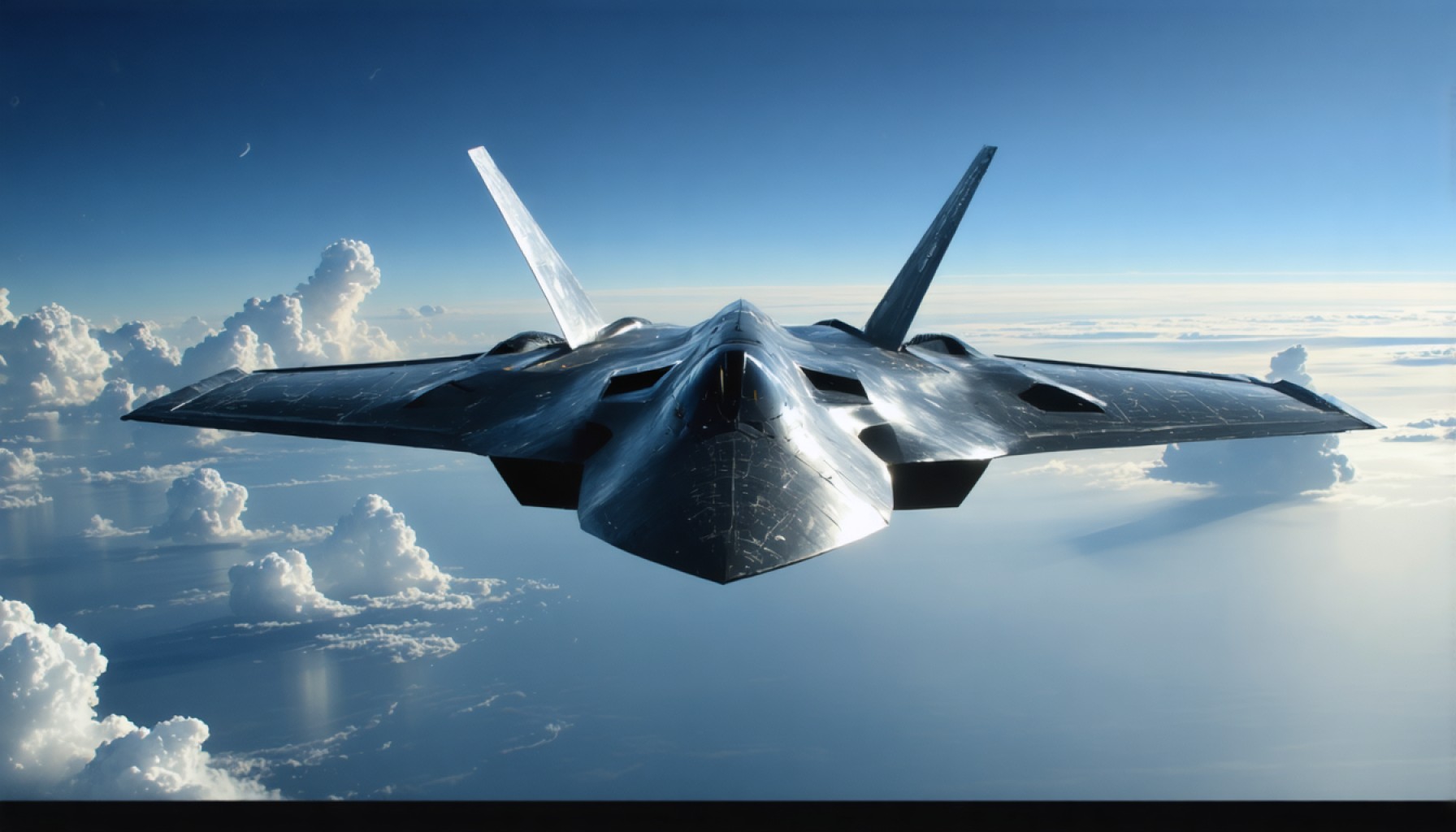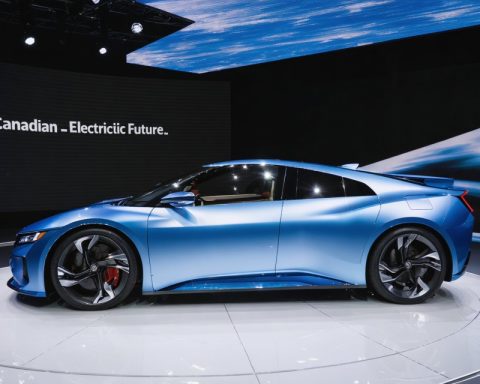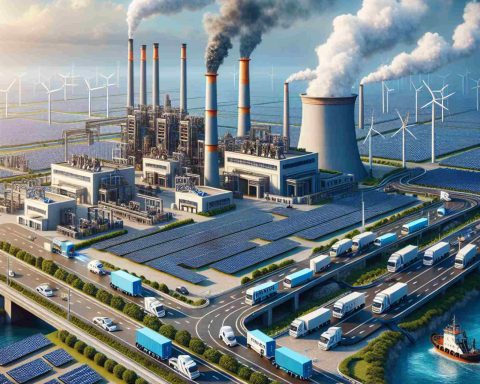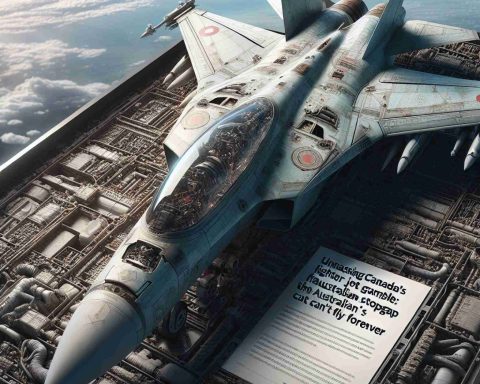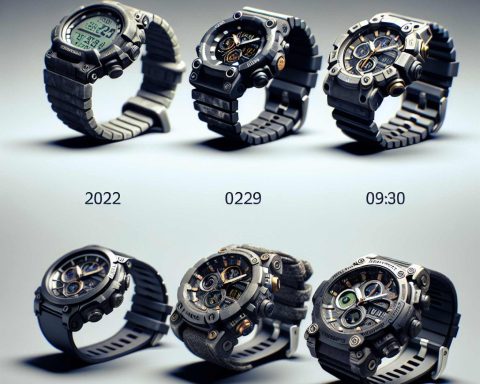- Elon Musk is exploring the potential of the SR-72, an aircraft promising hypersonic flight capabilities, indicating a new frontier in aviation.
- Dubbed “Son of Blackbird,” the SR-72 aims to redefine speed, enabling rapid global travel and sparking widespread interest.
- Musk’s vision for the SR-72 aligns with his SpaceX ambitions, combining space and terrestrial innovation.
- Challenges such as regulatory hurdles and environmental concerns must be addressed to realize this vision.
- The pursuit of hypersonic travel highlights Musk’s dedication to pushing technological boundaries and transforming human experiences.
Beneath the shimmering veil of the night sky, Elon Musk reflects on possibilities that outshine even the brightest stars. The maverick CEO, known for launching rockets and reshaping the future of electric vehicles, now turns his gaze to something spectral yet substantial—the SR-72, an aircraft that whispers the language of speed and power. Like a shadow darting at the edge of darkness, the SR-72, dubbed “Son of Blackbird,” alludes to a new era of hypersonic flight.
Imagine the SR-72 slicing through the stratosphere with the grace of a peregrine falcon diving for prey. This aircraft promises to soar at such velocities that the mere concept of speed becomes a blur. It’s designed to traverse the planet in a heartbeat, serving as both a technological marvel and a new frontier of human capability.
Rumors swirl amid Musk’s piqued interest in leveraging the marvel of engineering that the SR-72 represents. His SpaceX paradigm of conquering space could well be complemented by a more earthly venture that catches the winds of innovation. Musk’s interests aim to pierce the sound barrier, giving wings to dreams of instantaneous travel.
The potential union of Musk and the SR-72 crafts a vivid tableau of what’s to come—an intersection of human ambition, technology, and the persistent urge to redefine our boundaries. Consider how his unique blend of vision and resources could breathe life into the promises of hypersonic travel. It fuels imaginations across the globe, painting pictures of journeys compressed into mere moments, weddings and reunions no longer tethered by grueling travel hours.
Yet, Musk understands the labyrinthine landscape of regulations, innovation hurdles, and environmental considerations that precede any such venture. Despite these challenges, the path towards hypersonic flight seems less a distant specter and more a close reality with him at the helm.
Our reflections linger on Musk’s relentless pursuit of progress and the tantalizing prospect of standing on the cusp of a new aviation age. His flirtation with the SR-72 fuels our perpetual thirst for advancement and, at its core, speaks to a fundamental truth: that our reach should exceed our grasp, or what’s a heaven for?
Musk’s earthbound aspirations remind us that dreams borne on the wings of innovation have the power to transform the mundane into the magical. The skies are indeed limitless for those who dare to look up.
Musk’s Hypersonic Dream: Unveiling the Future of Aviation and Speed
Introduction
Elon Musk, an icon of innovation celebrated for his ventures into space and electric vehicles, is now directing his attention towards a groundbreaking flight experience. The hypersonic aircraft, SR-72, is positioned to transcend current limitations of speed and redefine travel—a prospect drawing significant interest from both technological enthusiasts and industry stakeholders. Known as the “Son of Blackbird,” the SR-72 emerges as a beacon in aviation that could bridge the gap between terrestrial and celestial travel.
Insider Insights and Industry Potential
The SR-72 is anticipated to achieve speeds surpassing that of sound several times over, reaching up to Mach 6—six times the speed of sound. This promises a scenario where intercontinental travel could be reduced to just a few hours. The potential applications of hypersonic travel extend beyond passenger transport to include military reconnaissance missions, cargo delivery, and rapid response scenarios.
Industry Trends and Market Forecasts
The global hypersonic technology market is gaining traction, with an expected compound annual growth rate (CAGR) of around 7.8% from 2023 to 2028, according to MarketsandMarkets. This propulsion in growth underscores the increasing demand for faster travel solutions. The involvement of a visionary like Elon Musk not only raises the profile of the SR-72 project but also critical funding and rapid prototyping capabilities.
Challenges and Limitations
Despite its promising prospects, the technology behind the SR-72 faces considerable hurdles. Concerns about heat management at hypersonic speeds, materials science, and tackling atmospheric friction remain significant. Additionally, existing airspace regulations pose a challenge for integrating hypersonic flights into current aviation infrastructures without compromising safety.
Feasibility and Environmental Impact
The environmental impact of hypersonic travel is a topic of growing debate. High speeds could potentially result in increased carbon emissions and contrail-induced climate effects. However, Musk’s push for sustainable innovation hints at possible integration of eco-friendly technologies, such as utilizing synthetic fuels or incorporating solar energy.
Legal and Regulatory Landscape
With aerospace law lagging behind technology, clear regulatory pathways for hypersonic transport remain absent. Navigating international airspace agreements, safety certifications, and noise pollution standards require robust strategic planning.
Recommendations for Enthusiasts and Innovators
– Stay Informed: Keep track of developments in hypersonic travel by following industry leaders and publications.
– Invest in Sustainable Tech: Engage with companies incorporating green technologies in aerospace to stay ahead in eco-friendly innovations.
– Understand Regulatory Trends: Awareness of regulatory changes can provide insights for potential investments or career opportunities in aerospace.
Conclusion
As Elon Musk’s interest in the SR-72 unfolds, anticipation builds around the potential transformation in global travel paradigms. While technical and regulatory challenges are apparent, the collective push towards hypersonic advancement promises to usher in an era where geographical distances shrink, thanks to unprecedented speed. The future of aviation, with visionaries like Musk at the helm, is poised to reach new heights, redefining not just transportation but human interaction and connectivity.
For more information on Elon Musk’s ventures, check SpaceX or to follow trends in aviation innovations, visit Boeing.
